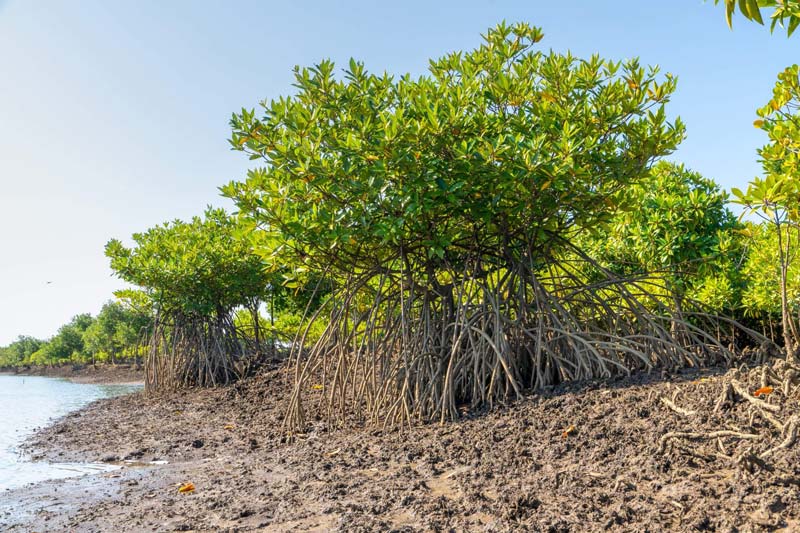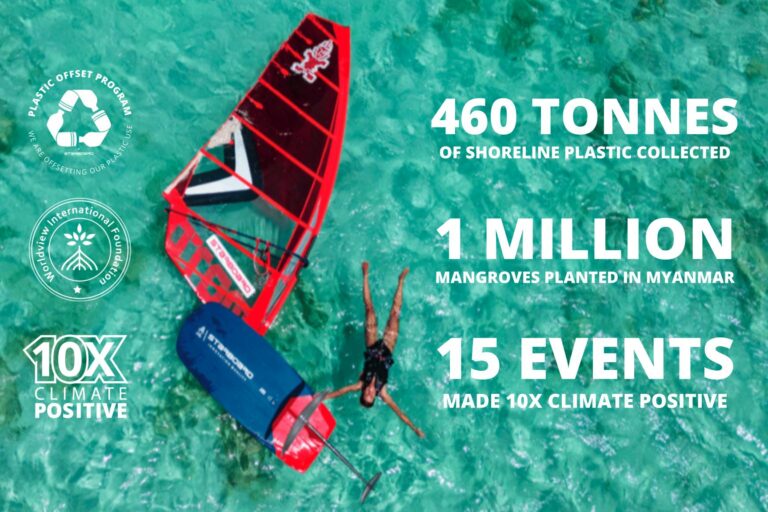For every board, Starboard plants 3 Mangroves, offsetting the board’s CO2 emissions more than 10X over.
For every board you buy, Starboard plants 3 mighty mangrove trees with Worldview International Foundation. The 3 Mangroves draw down a total of 2019 kg CO2 (3 x 673 kg) over 25 years. Half of this (1008 kg) goes to offsetting the board’s emissions 10X over; an average emission of a Starboard is 100 kg CO2. The other half gets sold as carbon credits, where the proceeds go to supporting livelihoods in vulnerable coastal communities.
Additionally to the 3 Mangroves per board, we calculate and report Starboard’s total carbon footprint annually across scopes 1, 2 and 3. We then offset these emissions 10X over, as well as the footprints of events we have supported, leaving us to be 10X Climate Positive. Through our footprint calculations and offsetting, we aim to be completely transparent about our impact on the planet, as well as to showcase a way of turning negatives into positives.
The Mighty Mangrove
Starboard's customers contribute to supporting livelihoods, enhancing biodiversity, and protecting shoreline areas most affected by climate change.
More than carbon offsetting
Mangroves are the world’s only saltwater tree and sink down 5 times more CO2 than an average terrestrial tree. Moreover, The Mighty Mangrove increases marine life by about 50% and enhances biodiversity both below and above water. Worldview International Foundation focuses on vulnerable areas most affected by climate change. Thus, the planting areas and their communities often depend upon the mangroves’ effective shoreline protection from extreme weather, sea level rise and erosion, as well as sustainable development provided by WIFs Climate Parks.
Thereby, Starboard’s customers contribute to supporting livelihoods, enhancing biodiversity, and protecting shoreline areas most affected by climate change.
10X Climate Positive
Our customers have already contributed to planting 2 million mangroves in Myanmar! Whatever Starboard you’re riding you’re helping the environment. We encourage you to share about how reforestation naturally restores the climate balance, even for Carbon intensive industries, like board production. Within the next 25 years, all of Starboard’s CO2 emissions since 1994 will be absorbed, and all emissions since 2017 will be compensated for 10X over.







